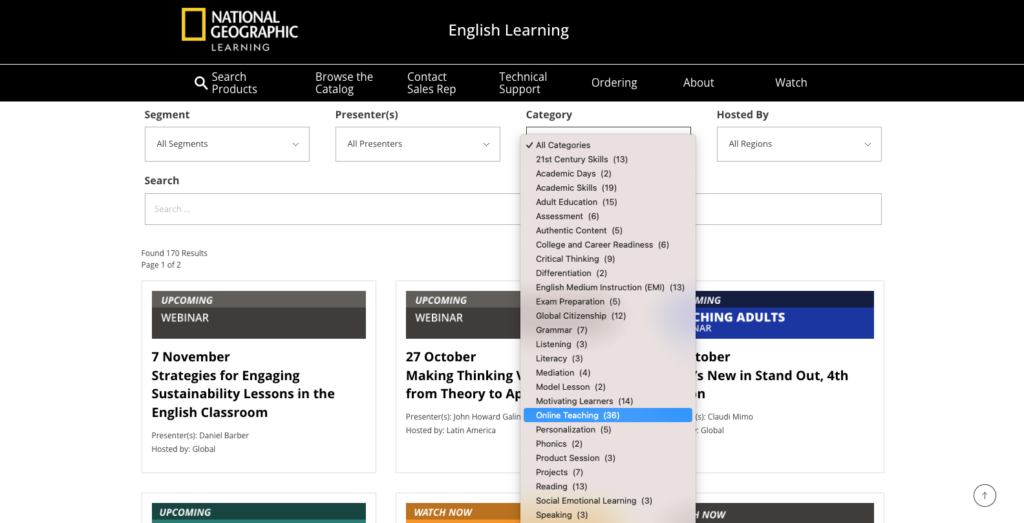More and more is being written about self-directed professional development (SDPD) as teachers (and indeed all professionals) start taking their professional development into their own hands. SDPD garnered more interest during the pandemic, as teachers began turning to resources outside their institutes to help them rethink how they taught and adapt to changing classroom circumstances.
But what exactly is self-directed professional development? Simply put, it’s when teachers take the initiative to decide upon and plan their own professional development activities. They are, as Mercer, Farrell and Freeman (2022) point out, “opportunities which a teacher purposefully and intentionally seeks out with the conscious aim of critically examining, extending, or improving their professional practice as a language teacher.” In other words, they are taking ownership of their professional development, rather than it being prescribed by an institute. SDPD can range from more formal actions, such as going to conferences, completing a course, or participating in action-research, to more informal actions like keeping a reflective teaching journal, attending webinars, reading books/research papers/blogs – the list goes on and on.
In any case, this got me thinking about how teachers could best use the resources that we offer at National Geographic Learning for SDPD. With over 150 recorded webinars available from www.eltngl.com/webinars plus more Professional Development resources available through the Spark platform, there’s a huge amount of content.
But are you actually getting the most out of webinars for your personal development? Or are you just watching them and ticking some professional development boxes for your institutes? Because surely watching a webinar should be more than just watching, right? There should be learning and development too and that comes through active participation – before, during and after the viewing process.
So, with that in mind, here are some tips and ideas to consider when planning some well-deserved self-directed professional development with NGL webinars.
Want to know about upcoming NGL Webinars?
Before You Watch
- Our webinars cover a variety of fascinating topics, from social-emotional learning to online teaching. There are many webinars to choose from, so it’s a good idea to decide on a topic that interests you beforehand.
- To help you do this, ask yourself what aspects of your work you find interesting or puzzling; or what innovations or trends could be relevant to you and what you want to achieve by watching a webinar.
- Use the filters to help you find a webinar topic that you think will benefit you.
- Once you’ve found something that piques your interest, read the overview to get a better understanding of the topic.

Get Ready to Learn!
- Most of the recordings are around one hour long, so make sure you set aside enough time to watch them.
- Put away your phone away to avoid distractions!
- Activate your existing knowledge by brainstorming what you already know about the topic (just like you do with your students!) This will facilitate greater clarity and understanding when watching the webinar.
- To help focus, prepare some questions that you want answered beforehand, or write down three things that you want to learn from the webinar.
While Watching
- As you’re watching the webinar, make sure you take notes using your preferred method – mindmaps, linear notes, Cornell Method, or OneNote are all great options. This will ensure that you are an active recipient of the information rather than just a passive listener.
- Remember, you’re not watching live, so make use of the pause button to stop the webinar and take time to reflect on what has been said or to give yourself more time to take notes.
After You Watch
Reflection
Reflection is so important in the learning process – for students and teachers alike – so make sure to set aside time to reflect post-viewing. To help you with this, it’s useful to have some question prompts to guide the process. For example:
- What are my main takeaways from this webinar?
- Did the webinar meet my expectations and needs or satisfy my curiosity about the topic?
- What questions do I still have about the topic?
- Has my viewpoint/opinion changed from viewing the webinar? Has it reinforced my existing views? Why/why not?
- Is there anything I want to challenge/disagree with in the webinar?
- Does the information and ideas presented differ from other articles/research/webinars I’ve read or watched? How?
- What did I use to think about this topic? What do I think now?
- How might I reframe the ideas presented in the webinar?
- What ideas/activities am I going to try out in my class?
- What other action am I going to take? How will I apply what I’ve learned?
Sharing
Sharing what you’ve watched and learned as “retrieval practice” helps make the content more memorable as well as helping to clarify your thoughts on the subject matter. It’s always a good idea to summarize what you’ve learned, alongside your own reflections and thoughts. You could do this by:
- writing a short paragraph describing what you watched in a learning journal.
- writing a blog or LinkedIn post about the webinar and your takeaways. Be sure to tag @National Geographic Learning ELT!
- sharing what you learned with a colleague – dialogic reflection has been shown to help deepen understanding as well as memorization.
Follow Up Task
Take control of your own learning! Choose a webinar from the NGL Webinar Library and use some of the ideas in this blog to start (or continue) your self-directed learning journey. Once you’ve taken the plunge, share your self-directed learning experience and let us know how you got on in the comments box.
Further Reading
Mercer, S., Farrell, C., & Freeman, D. (2022). Self-directed professional development in ELT [PDF]. Oxford University Press. www.oup.com/elt/expert
Woodward, T., Graves, K., & Freeman, D. (2018). Teacher development over time: Practical activities for language teachers. Routledge.
Ford, D. (2009). The developing teacher: Practical activities for professional development. Delta publishing.
IATEFL Teacher Development Special Interest Group, tdsig.iatefl.org
IATEFL Teacher Training and Education Special Interest Group, ttedsig.iatefl.org



Nice article.keep up the good work